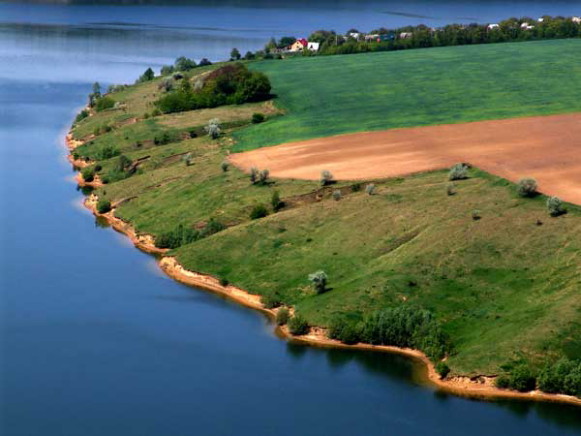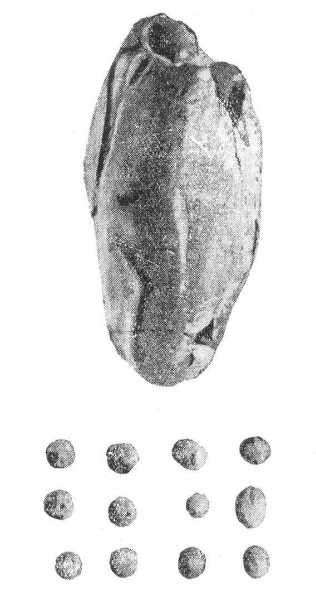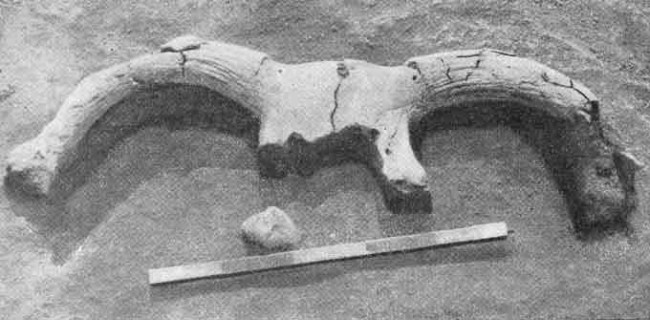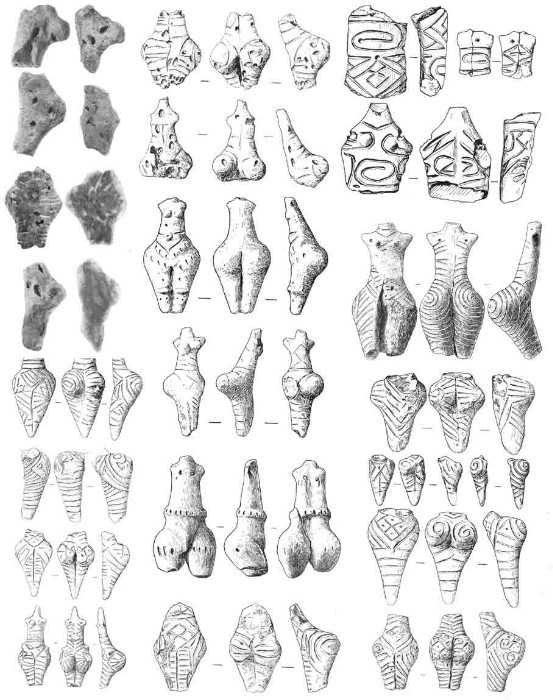Luka-Vrublivetska
Luka-Vrublivetska [Лука-Врублівецька]. A multi-occupational site on the left bank of the Dnister River in Kamianets-Podilskyi raion, Khmelnytskyi oblast. Excavated between 1945 and 1950 by Pavlo Boryskovsky and Serhii Bibikov, the site revealed a Paleolithic occupation, a Trypillia culture settlement, and a Cherniakhiv culture and Kyivan Rus’ habitation. Three sites of the Middle Paleolithic occupation, among the oldest in Ukraine (ca 400,000–100,000 years old), produced examples of Acheulean and Mousterian flint tools. The Trypillian settlement of the fourth millennium BC revealed seven semi-pit dwellings, the largest being 45 m long and 3–5 m wide, with eleven hearths arranged on the long axis of the building. Faunal remains uncovered indicate the use of domesticated stock (cattle, horses, pigs), as well as wild animals (deer, elk, roe deer, wild boar, and bear). In addition the recovery of bone and stone implements (such as sickle blades and bow drills), ceramic vessels (often decorated with curvilinear ornamentation), and approximately 250 terra-cotta effigies of humans and animals, a few copper items (fishing hooks, awls, and small ornaments) were also recovered. These copper items constitute the oldest man-made metal objects found in Ukraine.
BIBLIOGRAPHY
Bibikov, Serhii. Ranniotrepol'skoie poselennie Luka-Vrublevetskaia na Dnestre (Moscow 1953)
[This article originally appeared in the Encyclopedia of Ukraine, vol. 3 (1993).]




